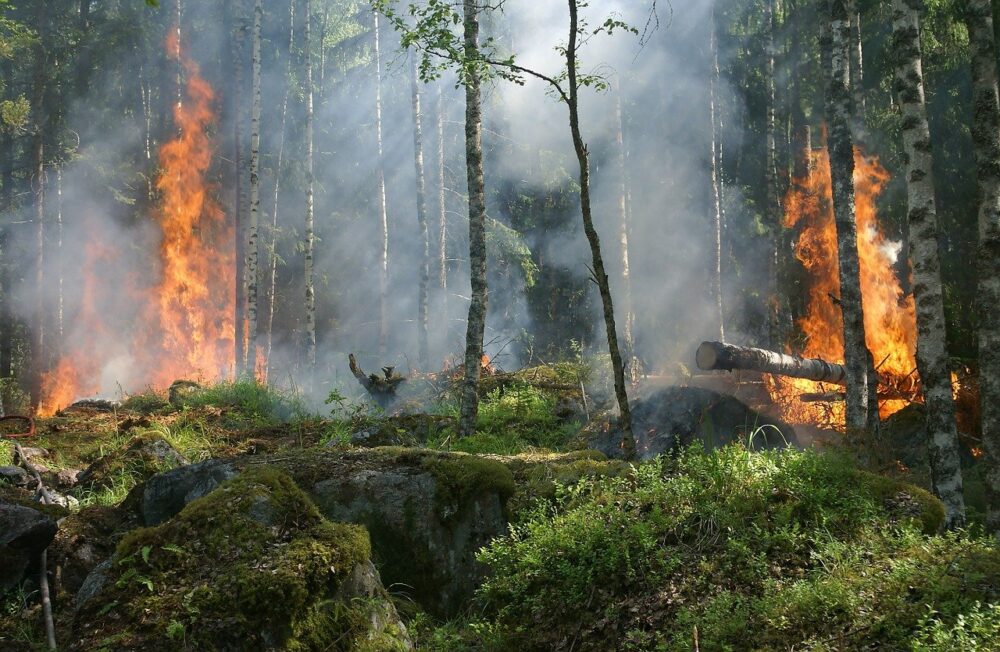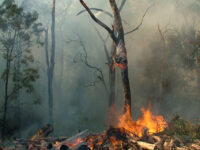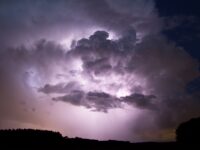For most people, fire is synonymous with destruction and death. After the recent apocalyptic-looking orange skies in northern California made national news, this association has only been strengthened. Because of California’s rampant wildfires, thousands of people and countless animals have been displaced, more than a thousand homes have been destroyed, and five people have tragically died. Notably, two of the most recent fires have even made the list of the state’s largest in history. Despite their catastrophic effects on humanity, natural forest fires do occur and even have some benefits to ecosystems. According to the Center for Climate and Energy Solutions, the annual number of large fires in the western United States has nearly doubled between 1984 and 2015, mirroring increases in temperature and dryness due to climate change. Scientific American links less dependable precipitation, hotter temperatures, drier soil, snowpack that melts sooner, and salvage logging to increased risks of large blazes. Furthermore, recent USDA Forest Service projections show that a 1 degree Celsius average increase in global temperature could increase the annual mean area burned by up to 600 percent in some regions of the U.S. — and according to the National Oceanic and Atmospheric Administration, this could easily happen within the next 30 years.
Furthermore, recent USDA Forest Service projections show that a 1 degree Celsius average increase in global temperature could increase the annual mean area burned by up to 600 percent in some regions of the U.S.
While it may seem counterintuitive, forest fires have been a force of ecological balance for thousands of years. Most ecosystems benefit from periodic fires — many plants and animals have even evolved to depend on them. Naturally, matter such as dead or decaying plants builds up on the forest floor over time; this results in anaerobic, sunlight-deficient conditions that can choke out small plants and new growth, kill oxygen-dependent species in the soil, and prevent nutrients from being accessed by plant roots. A natural fire can clear that layer of decay and release trapped nutrients back into the ecosystem. Once the nutrient-rich burnt material has settled, it becomes the optimal medium for new plant growth. Roots can then access these nutrients more quickly than if the material had decayed over time. Moreover, invasive plants are less likely to recover in this environment, allowing native plants to rebuild the forest with greater biodiversity.
Many plants have evolved over time to take advantage of this cycle. For example, numerous species of pine trees that are indigenous to environments where hot, fast moving fires occur frequently have evolved to have thick, tough “serotinous” cones that are tightly closed with strong resin and can hang on the trees for years. Only when a large fire engulfs the tree are the seeds released, as the resin melts from the cone. The bed of nutrient-dense ash left over from the blaze is the perfect nursery for pine seeds to germinate and repopulate the forest. This isn’t new information either. Members of the Karuk, Yurok, and Mono Native American Tribes, as well as countless other indigenous peoples in the U.S., have been performing ceremonial burnings for thousands of years — that is, until the U.S. government banned the practice.
Though there are benefits to natural blazes, more than 80 percent of wildfires in the U.S. are caused by people and are harder to control than ever before because of an increase in droughts, higher temperatures, drier air, and stronger winds.
Though there are benefits to natural blazes, more than 80 percent of wildfires in the U.S. are caused by people and are harder to control than ever before because of an increase in droughts, higher temperatures, drier air, and stronger winds. As temperatures continue to rise as NASA projects, this disturbing trend will only worsen. Other practices such as salvage logging can also contribute to the increase in fire severity. Salvage logging is a method of removing burnt trees from post-fire landscapes, often by companies to squeeze any remaining profit from the left-over timber. This practice removes precious nutrient resources from the remaining biosphere and makes the land even more vulnerable to future fires. As the risk of forest fires grows with rising temperatures, the responsibility falls on us to protect our landscapes. Like any destructive force, recovery plans with active forest management must be put in place before a devastating fire hits to minimize habitat damage and reduce excessive erosion. Fire-resistant design features and materials should be the standard for buildings in fire-prone areas. Additionally, individuals should take care to fully extinguish any personal fires while camping or outside.
As the risk of forest fires grows with rising temperatures, the responsibility falls on us to protect our landscapes.
While Smokey the Bear is right that “Only YOU can prevent forest fires,” climate change is indeed accelerating their occurrence faster than the gender-reveal-parties-gone-wrong that ignite them. It is up to us to be responsible outdoorsmen — which means more than just extinguishing campfires; it must also include fighting to reduce our contributions to global climate change.
Image Source: Pixabay






